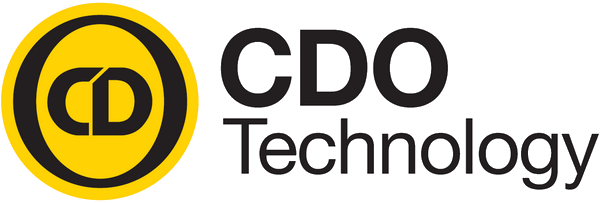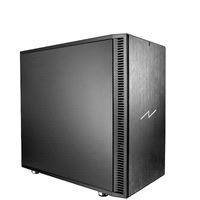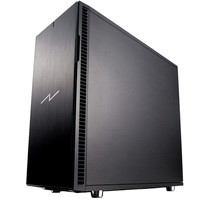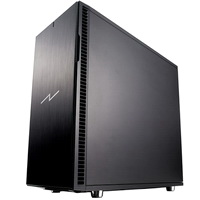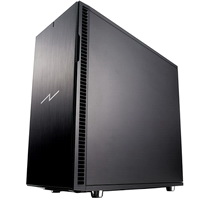Increase Productivity with a Volta Pro Workstation
VOLTA PRO WORKSTATIONS
Creating the perfect performance Volta Pro Workstations that will do what you need it to do can be very difficult. To do this, you have to understand how the different hardware parts affect workstation performance for your specific work tasks. The key hardware choices you have to make are the CPU, graphics processing unit (GPU), RAM, and hard drive. You can call or email CDO for expert advice or you can browse the configurator on our website and make those decisions by yourself. See the recommended system configurations above.
PROCESSOR
The processor choice is simply a decision between CPU frequency (speed) and number of cores. CDO’s performance workstations range from four to 20 CPU Core and up to 40 CPU threads. Generally, there are twice as many threads as cores and threads are ordered sequences of instructions that specify what the CPU should do. Speed is measured in GHz and typically fewer core count processors run at a faster frequency while higher core processors typically run at lower frequencies.
The creating and manipulating 3D object portion of applications like SolidWorks, 3D Max, and Maya need higher frequency CPUs more than increased core count, whereas rendering and simulation applications want more cores for peak performance. CDO’s safely overclocked workstations (Volta Pro VP1 & Volta Pro VP2 workstations) provide up to 25% more performance for modeling and design applications. Our rendering and simulation workstations (Volta Pro X & Volta Pro X2 workstations) include the Intel Xeon processor(s) with up to 20 cores and 40 threads: remember that these workstations can use all the cores for rendering and simulations.
GPU
The GPU is responsible for creating the image you see on your LCD. The GPUs are responsible for setting up polygons and applying lighting, texture and color to a 3D image. Nvidia and AMD produce the professional grade graphics cards we use in our workstations. They are designed to run 24/7 at peak workload without failure through their strict quality control and use of better manufacturing parts. They also have tested and certified intermediary software (drivers) that tell the graphics card to how to run flawlessly with the operating system and the application software that professionals use for the work.
- Design & Modeling
The interactive portions of applications like SolidWorks, Revit, Maya, and 3ds Max don’t gain advantage from multiple GPUs and run fine with basic to mid-range NVIDIA Quadro or AMD FirePro graphics cards. The GPU holds frame rates up for smooth panning, zooming and rotating when creating and working 3D objects.
Rendering & Simulation
GPU rendering engines like V-Ray RT, Octane, and Iray and simulation applications like CATIA and ANSYS can use the GPU to work in the background rendering and simulating – working exponentially faster than the CPU in these applications. Buying higher end GPUs and in many cases running multiple GPUs will increase performance and be well worth the money.
Large & High Resolution Display Screens
High resolution displays require high GPU memory that is only available on top end cards. Especially when running many monitor resolutions and 4K displays, multi-graphics cards are a good idea. Note that adding a second graphics card does not double performance; typically you will see a 25-50% increase.
RAM
It is much better to have more memory than not enough but it is hard to tell how much is enough. More RAM allows you to multitask without getting bogged down. We recommend at least 16GB of RAM to start with and much more for such jobs as: simulating large data sets, textures in 3D graphics, complex video editing, large scenes with lots of polygons, and complex part product design. A rule of thumb is having a 25% buffer of RAM usage while doing very intensive jobs.
HARD DRIVES
Properly configuring the OS and data drives in each workstation and then using SSDs to increase data reading times and decrease seek times is very important. Sustained read time can be more than four to five times higher on an SSD. Seek times are also much faster; consequently the faster SSDs are rated nanoseconds instead of milliseconds like SATA drives. This increased speed can have noticeable impact on your daily project completion times. A 180GB to 250GB SSD is recommended for the operating system and program installation and a SATA drive for storing data and work.
CUSTOMER REVIEWS
Read what CDO’s customers have to say:
I approached CDO with a specific need: a performance workstation for video editing capable of handling large files without bogging down or crashing. I had a general idea of what I needed but I’m not highly technical and didn’t know how to get the best configuration for the budget I wanted to work with.
Gary Underwood was extremely helpful. My inquiry was answered almost immediately, and Gary walked me through the process of choosing the optimal combination of CPU, graphics card, and storage to give me the fastest and most powerful machine for the money. His suggestions made sense and it was evident he was actually thinking about my needs, not suggesting a cookie-cutter solution. Gary and the CDO staff were extremely responsive and helpful at every step of the way. The workstation was ready when promised, preloaded with the requisite software and pre-tested.
The workstation is performing flawless. Gary followed up after the sale to make sure I was completely satisfied.
I couldn’t be more pleased with my buying experience, and I’ll come back to CDO the next time I’ve got a computer technology challenge.
I purchased a Volta Pro VP2 workstation from CDO Technology. I am a SolidWorks user and find the overclocked core i7 5930 6-core/Asus X99 with 32gb ram, 256gb Samsung 850 Pro SSD, 60gb page file, Antec P280 tower, Thermaltake 1000W Power supply, Corsair H100 Hydro cooling, and Quadro K2200 all to be well sized for my needs without getting too pricey. This unit starts up quickly, speeds through applications and graphics, and runs very quiet. I use the ASUS PB278Q 27” Monitor. The staff at CDO was very informative, professional, and responsive. I am very satisfied with my purchase and would recommend discussing your needs with CDO and let them help you create the best overall value.
Gary Fain, PEThe technicians at CDO Technology were very helpful in assisting me with putting together a specification for a new workstation to handle the demanding processing load of Autodesk Revit. I am very pleased with the performance and stability of the system they built. They will be the ones I turn to for my future computing needs.
Nick Cantu, CPD